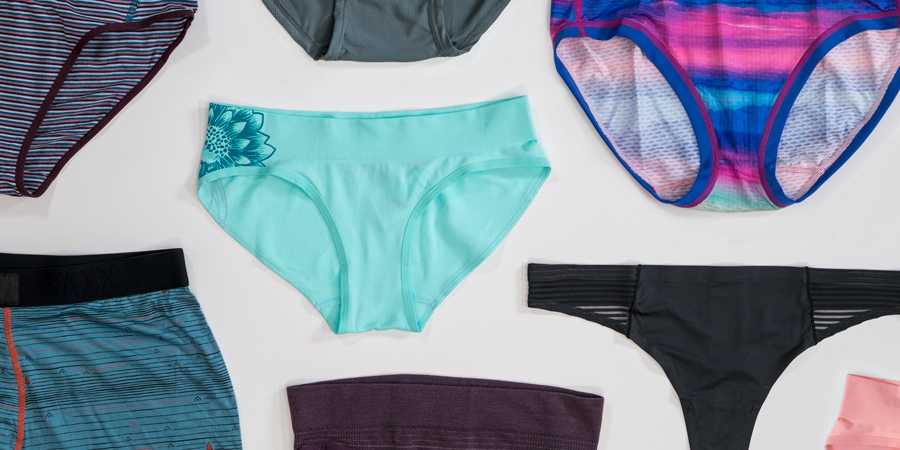On a normal day, choosing a pair of underwear might not take more thought than asking yourself if it's clean or not. But, when you're heading out for a hike, your choice of skivvies can have a big impact on comfort. (That is, if you decide to wear underwear at all; some hikers will skip undergarments altogether and choose a pair of shorts with built-in briefs or they may even go commando, both of which are viable options if you find them comfy.)
However, the majority of hikers do choose to wear underwear with their hiking shorts or pants and the right pair can help keep you dry and chafe-free. The wrong pair, well, not so much.
Here are some quick tips for choosing hiking underwear, with more details below.
- Choose moisture-wicking, quick-dry underwear: You'll want to avoid cotton and choose breathable underwear made from a synthetic material, like polyester, or merino wool. Unlike cotton, these materials wick moisture away from the skin and dry quickly.
- Select the style that works for you: The style of underwear you choose is mostly a personal decision based on what you find most comfortable and functional. For men, options include briefs, boxers or boxer briefs. For women, the main options are briefs, boxer briefs (aka boy shorts), bikinis and thongs. Sports bras are available with different constructions, support, strap types and features.
- Choose a comfortably snug, but not-too-tight, fit: You want a comfortable, close fit that's formfitting, but not too tight. And be careful not to get underwear that's too loose, as that can cause fabric to bunch up and rub against your skin.
- Find features that boost comfort, like tagless waistbands and flat seams: For the best comfort, look for a pair of underwear without scratchy tags or seams. A flat, comfortable waistband that won't irritate your skin when a backpack is pressing against it is another important feature.
What Type of Underwear Fabric Should You Choose?
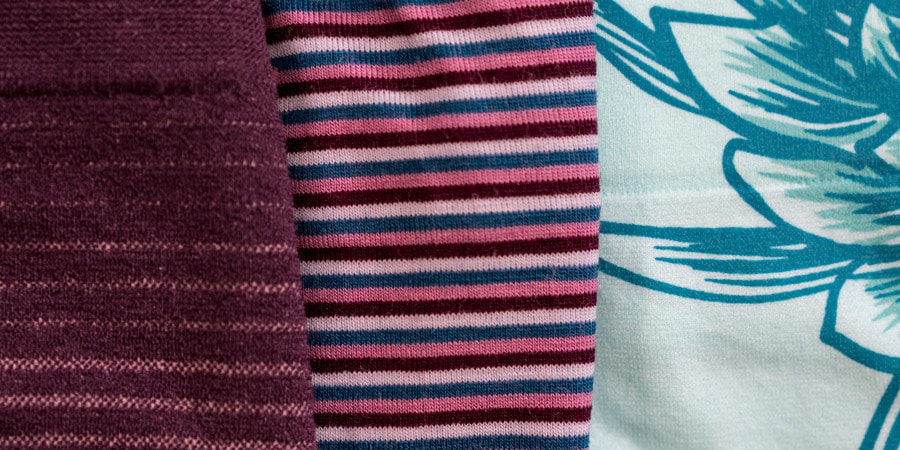
Synthetics: Typically, breathable underwear for hiking is made from synthetic fabrics such as polyester and nylon. You might also see polypropylene, rayon or a blend of fabrics. Some underwear includes spandex for comfortable stretch and a fit that is snug but not constrictive. Underwear made from synthetic fabrics has the following attributes:
- Quick drying: Synthetics do an excellent job of wicking and dissipating sweat, so they give you the driest feel of any type of fabric.
- Durable: Synthetic fabrics tend to hold up very well to abrasion, making them the most durable option.
- Odor retention: Synthetic fabrics typically hold onto odors more than other options. Some manufacturers add a finish that inhibits the buildup of odor-causing bacteria, which helps. But, if you'll be spending several days on the trail without washing, be prepared to put up with the smell.
Merino Wool: Soft, ultrafine, itch-free merino wool is an excellent option for underwear. It is often blended with other fabrics, like spandex or nylon to enhance fit, flexibility and durability. Underwear made from merino wool has the following features:
- Wicks well: Wool does a good job of pulling moisture off of your skin and into the fabric. Some of the moisture will stay in the core of the wool fibers, which tends to make wool feel not quite as dry as synthetic fabric, but it won't chill you. It will also take longer to dry when it gets wet than synthetics.
- It cools, too: The moisture that's held in the core of merino wool fibers releases when temps heat up, which can offer a bit of cooling in warm weather.
- Moderately durable: Constant rubbing can eventually wear through merino wool, so eventually you may notice the fabric getting thin in certain places.
- Odor free: Wool is naturally resistant to odor-causing bacteria, which helps keep it odor free even after consecutive days of wear.
Which Underwear Style is Best for Hiking?
Boxers or briefs? Bikini or hipster? The style of underwear that you wear is mainly a personal choice and it may take some experimenting to figure out what works best for you on the trail. Ultimately, your decision should be guided by what makes you feel the most comfortable. Here are some guidelines to help get you started:
Women's Underwear Styles
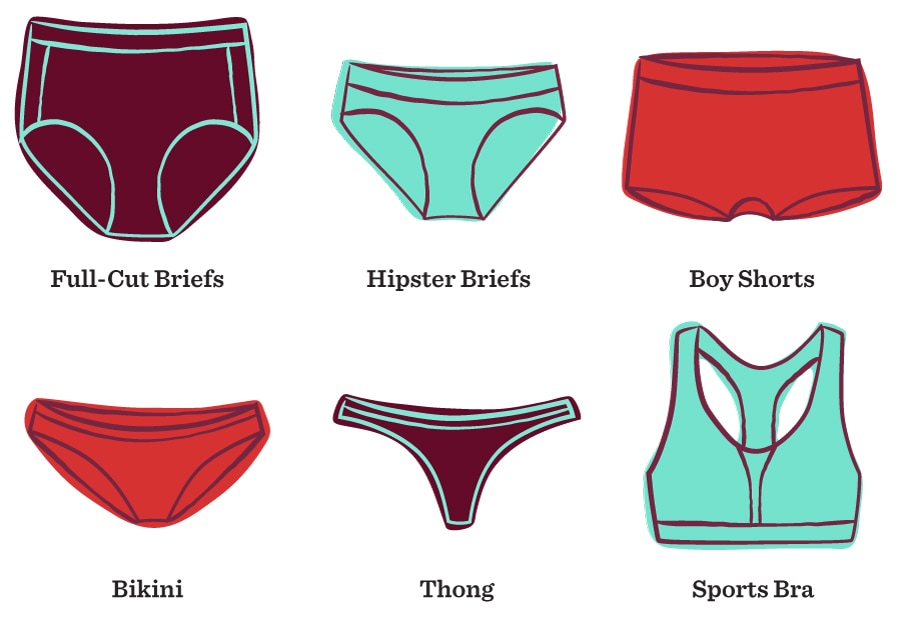
Briefs: Women's briefs provide good coverage and tend to sit above the hips. Within this category, you're likely to find full-cut briefs and hipsters. Full-cut briefs provide lots of coverage in the front and back. Hipsters are similar to the bikini, providing medium coverage in the front and back but has a slightly higher rise with more coverage on the hips.
Boxer briefs (aka boy shorts): These provide the most coverage among the women's underwear styles with their longer cut that extends down to the top of the thigh. The added coverage can often help reduce inner-thigh chafing.
Bikinis: Inspired by the bathing suit, the bikini cut generally provides less rear coverage with a thinner, low-rise waistband and higher cut for the leg.
Thongs: Providing the least amount of coverage of all the women's underwear styles, thongs are lightweight and trim and are the quickest drying of all the styles.
Sports bras: Sports bras provide essential support and comfort during activities such as hiking. When shopping for sports bras, it's important to consider the level of support you need, the construction style, strap type, features and fit. To learn how to find the best sports bra for you, see our article, How to Choose Sports Bras.
Men's Underwear Styles
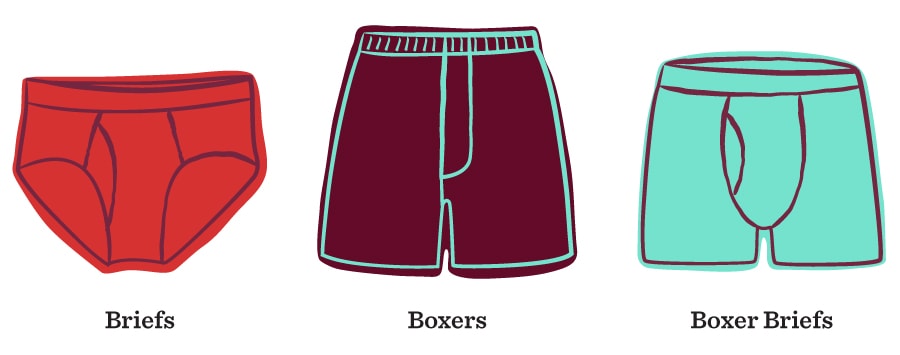
Briefs: Briefs generally provide good support but not a whole lot of coverage, so if you experience chafing, like between your thighs, you might try boxers or boxer briefs.
Boxers: The looser fit and added coverage of boxers appeal to some men and can help avert inner-thigh chafing, but make sure the looser fit doesn't result in bunching that can cause discomfort.
Boxer briefs: A possible best-of-both worlds solution, boxer briefs provide good coverage to limit skin-on-skin rubbing while also offering a snugger, more-supportive fit than boxers.
How Should Hiking Underwear Fit?
A good-fitting pair of underwear provides support, avoids chafing and enhances wicking to keep you comfortable on the trail. Here are some tips on getting the right fit:
Choose a snug, but not-too-tight fit: Size your underwear so it is formfitting, but not so tight that it causes discomfort. On the flipside, be careful not to size them too big, as doing so can cause bunching and rubbing, which will irritate your skin. Some people like to wear compression shorts for active sports, like running and working out. You can experiment with using these on hikes, but you might find that after several hours on the trail, the constant pressure becomes uncomfortable.
The right fit enhances wicking: A loose fit can seemingly provide more ventilation, but keep in mind that in order for a fabric to wick moisture off your skin, it needs to be in contact with skin. So, it will typically benefit you more to have wicking underwear that's more formfitting.
A longer cut can help with thigh chafing: If you experience inner-thigh chafing, try a pair of underwear with a longer cut that covers the spot where you have discomfort. For women and men, boxer briefs are usually the answer.
What Underwear Features Should You Look For?
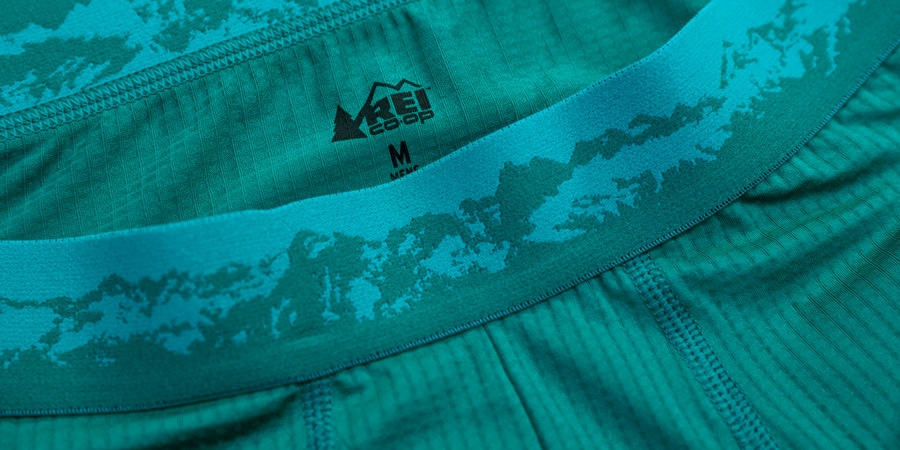
Underwear is relatively low-tech but there are a handful of features to consider when choosing. Here are some things to look for:
Tagless: Who wants an annoying tag scratching at their skin while hiking? Tagless underwear is one of the greatest improvements ever made to skivvies.
Flatlock seams: Just as a tag can be a bother, so too can scratchy seams that will irritate your skin while you're on the go. Look for underwear that has flat, wide seams (often called flatlock seams) that won't press into your skin.
Comfortable waistband: Make sure you find underwear with a waistband that sits comfortably on your body. When you're wearing a backpack, the waistband on your undies gets pressed into your skin which can turn minor discomfort into a serious annoyance on the trail. In general, a flat waistband that's rather thin will be more comfortable than one that is thick and bulky.
Fly: Some men like to have a fly in their underwear, others are indifferent. If it's a must-have for you, be sure to find underwear that has it.
Odor resistance: We mentioned this in the section on synthetic fabrics, but we'll echo it here. Hiking is often a sweaty endeavor, which leads to stinky clothing. Some underwear includes an antimicrobial treatment to help reduce odor retention. Know that these treatments can wear off with time, and remember that merino wool is naturally odor resistant and that it won't ever lose that quality.
